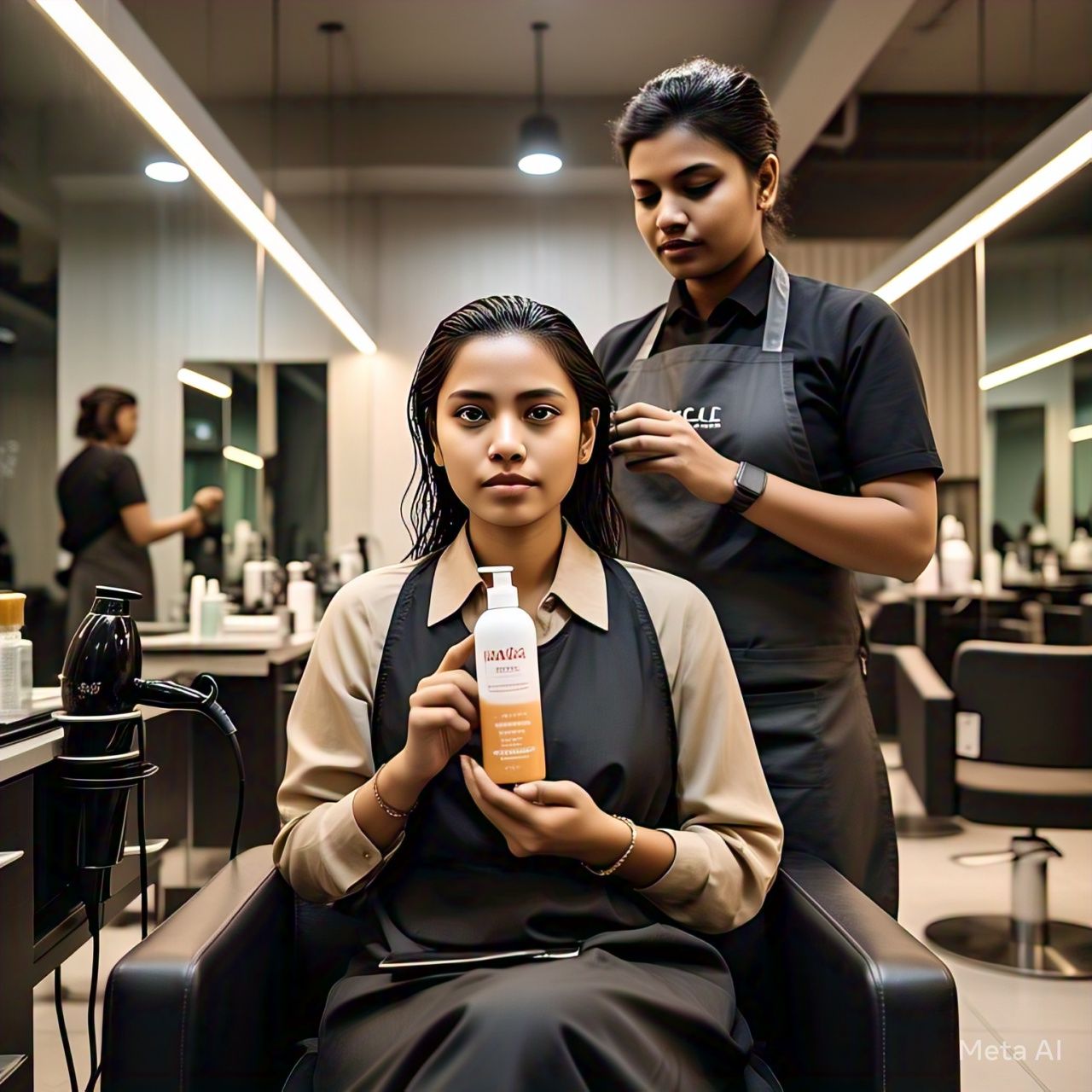Understanding Chemically Treated Hair and Its Needs
Chemically treated hair requires special care to maintain its health and vibrancy. Whether it’s colored, permed, relaxed, or straightened, chemical treatments can strip hair of its natural moisture, leaving it dry, brittle, and prone to breakage. Experts agree that using the right conditioner is crucial for restoring hydration, improving elasticity, and protecting hair from further damage.
How Chemical Treatments Affect Hair
Chemical processes alter the hair’s natural structure. For example, hair coloring opens the cuticle to deposit pigment, while relaxers break down protein bonds to straighten curls. These treatments weaken the hair shaft, making it more susceptible to environmental damage, heat styling, and moisture loss. Without proper care, chemically treated hair can become frizzy, dull, and unmanageable.
Key Ingredients to Look for in a Conditioner
Not all conditioners are suitable for chemically treated hair. Experts recommend looking for formulas enriched with:
- Proteins (such as keratin or hydrolyzed wheat protein) to rebuild strength.
- Natural oils (like argan, coconut, or jojoba oil) to lock in moisture.
- Humectants (such as glycerin or hyaluronic acid) to attract and retain hydration.
- Silicones (like dimethicone) for added smoothness and shine.
Avoid conditioners with sulfates, parabens, or alcohol, as these can further dry out the hair.
Why Regular Conditioners Aren’t Enough
Standard conditioners may provide temporary softness but often lack the intensive repair that chemically treated hair needs. Deep conditioners, leave-in treatments, and bond-rebuilding formulas are more effective in restoring hair health. Experts suggest incorporating a weekly deep conditioning mask to maintain optimal moisture and strength.
By understanding the unique needs of chemically treated hair, individuals can make informed choices when selecting conditioners. The right product can transform damaged strands into soft, shiny, and resilient hair.
Top Recommended Conditioners by Hair Experts
With countless options on the market, choosing the best conditioner for chemically treated hair can be overwhelming. Experts have tested and reviewed numerous products to identify the most effective ones. These conditioners stand out for their ability to repair, hydrate, and protect damaged hair.
Luxury Options for Intensive Repair
High-end brands often use premium ingredients that deliver noticeable results. Olaplex No. 5 Bond Maintenance Conditioner is a favorite among stylists for its bond-rebuilding technology, which repairs broken disulfide links in the hair. Another top pick is Kerastase Resistance Conditioner, which combines ceramides and proteins to reinforce weakened strands.
Drugstore Gems That Deliver Results
Not everyone can splurge on luxury hair care, but affordable options can be just as effective. SheaMoisture Manuka Honey & Yogurt Hydrate + Repair Conditioner is packed with natural butters and proteins, making it ideal for dry, damaged hair. L’Oreal Paris Elvive Total Repair 5 Conditioner is another budget-friendly choice, offering a blend of ceramides and oils to restore softness.
Specialized Conditioners for Different Treatments
Different chemical processes require tailored care. For colored hair, Redken Color Extend Magnetics Conditioner helps preserve vibrancy while preventing fade. Those with relaxed hair may benefit from Mizani Moisture Fusion Conditioner, designed to combat extreme dryness. Curly-haired individuals who have undergone keratin treatments should consider Moroccanoil Smoothing Conditioner, which tames frizz without weighing curls down.
What the Experts Say About Application
Simply using a good conditioner isn’t enough—proper application matters. Experts recommend:
- Applying conditioner from mid-length to ends, avoiding the scalp to prevent buildup.
- Leaving it on for at least 3-5 minutes to allow deep penetration.
- Using a wide-tooth comb to distribute the product evenly.
- Rinsing with cool water to seal the cuticles and enhance shine.
By selecting a conditioner tailored to their hair’s specific needs, individuals can significantly improve the health and appearance of chemically treated hair.
Common Mistakes to Avoid When Conditioning Chemically Treated Hair
Even with the best products, improper use can lead to lackluster results. Experts highlight the most common mistakes people make when conditioning chemically treated hair and how to avoid them.
Overwashing and Under-Conditioning
Frequent shampooing strips hair of natural oils, exacerbating dryness. Experts advise washing chemically treated hair no more than twice a week and always following up with a nourishing conditioner. Skipping conditioner or using too little can leave hair under-moisturized, leading to breakage.
Using the Wrong Type of Conditioner
Not all conditioners are interchangeable. A lightweight formula may not provide enough moisture for highly processed hair, while a heavy cream might weigh down fine strands. Experts recommend assessing hair porosity—low-porosity hair benefits from lighter conditioners, whereas high-porosity hair needs richer formulations.
Ignoring Heat Protection
Chemically treated hair is more vulnerable to heat damage. Many conditioners now include thermal protection, but experts suggest using a separate heat protectant before styling. Without this step, even the best conditioner won’t prevent further harm from blow-drying or flat ironing.
Skipping Regular Trims and Deep Treatments
Conditioners help maintain hair health but can’t repair split ends. Regular trims every 6-8 weeks prevent further damage. Additionally, experts emphasize the importance of deep conditioning treatments at least once a week to replenish lost moisture and nutrients.
By avoiding these mistakes, individuals can maximize the benefits of their conditioner and keep chemically treated hair looking its best.
Long-Term Care and Maintenance for Chemically Treated Hair
Maintaining healthy chemically treated hair goes beyond just using the right conditioner. Experts share their top tips for long-term care, ensuring hair remains strong, shiny, and resilient.
Building a Consistent Hair Care Routine
Consistency is key in hair care. Experts recommend a routine that includes:
- A sulfate-free shampoo to gently cleanse without stripping moisture.
- A hydrating conditioner suited to the hair’s specific needs.
- A weekly deep conditioning treatment for intensive repair.
- A leave-in conditioner or serum for daily protection.
Protecting Hair from Environmental Damage
Sun exposure, chlorine, and pollution can further damage chemically treated hair. Wearing a hat or using UV-protectant sprays helps shield hair from the sun. After swimming, rinsing hair with fresh water and applying conditioner prevents chlorine-induced dryness.
Adjusting Habits for Healthier Hair
Small changes can make a big difference. Experts suggest:
- Sleeping on a silk pillowcase to reduce friction and breakage.
- Avoiding tight hairstyles that stress already fragile strands.
- Limiting heat styling and opting for air-drying when possible.
When to Seek Professional Help
If hair remains excessively dry or brittle despite proper care, consulting a trichologist or stylist is advisable. They can assess underlying issues, recommend treatments, or adjust chemical processes to minimize damage.










